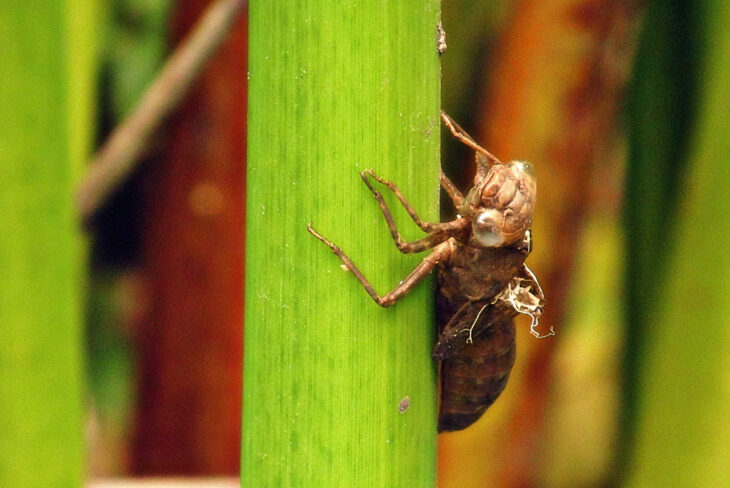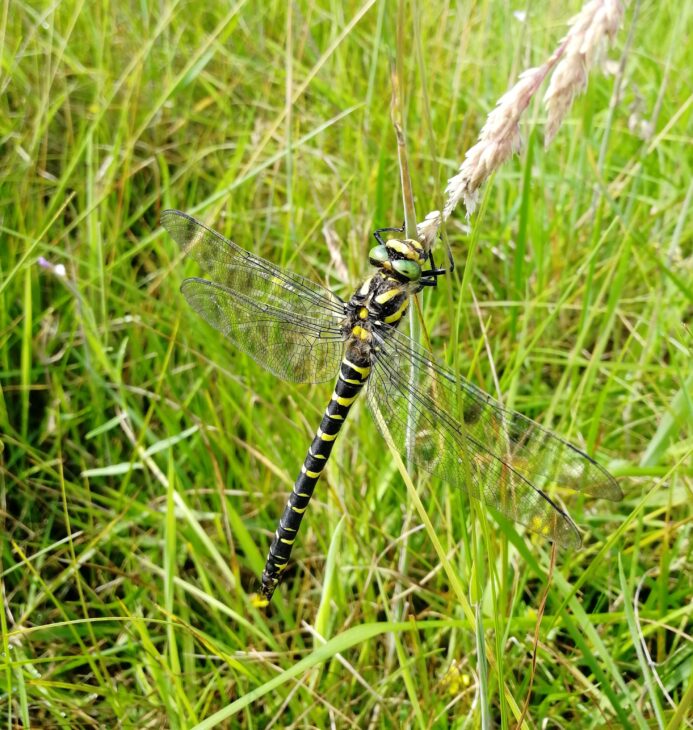The life and times of a young Dragonfly
The fleeting glimpse of a dragonfly is a common sight on a warm afternoon, flying dynamically around ponds as they swoop to catch insects out of the air. But where do Dragonflies actually come from? There certainly aren’t lots of mini-dragonflies zooming about (unless you count Damselflies, which are actually adults of a different set of species that are much smaller; they hold their wings together, rather than out horizontally.)
Like many other species of insect, the stages of development in Dragonflies can look completely different to the final adult form. Adults will lay their eggs very close to (or even in) fresh water, out of which a tadpole-like “pro-larvae” will emerge. These small insects camouflage well on the bottom of ponds and streams, some species even having hair to collect the surrounding silt and debris. Adult dragonflies are reportedly the most successful hunters in the animal kingdom (catching the prey that they aim for more than 95% of the time) and their nymphs are equally as ferocious. Not fantastic swimmers, nymphs get around by walking or if they need a bit of a boost, they can expel a jet of water from their rear end! They will need to eat plenty in order to moult up to 14 times before they’re ready to ditch their gills and leave the water; in some species this takes years (in general the cooler the water, the longer it takes.)

The empty skin or “exuviae” left behind by the dragonfly nymph. Photo © TJ Gehling https://bit.ly/2GSWEeH
When the time comes to mature into adulthood, the nymph will crawl up out of the water on a piece of vegetation. Once it has a good hold, the skin on the back of the neck will split so that the adult form can break through. This process happens in stages and it can take some time to pump up it’s wings and extremities; it’s the most vulnerable time in a dragonfly’s life as it will make easy prey for anything that can spot it. If you notice a dragonfly or damselfly that’s got it colours but they seem a lot more dull than normal, it’s probably because it has just recently emerged and is still in it’s adolescence!

The Golden Ringed Dragonfly can spend more than 5 years as a nymph before the adult emerges. Adults themselves will not live longer than a few months. Photo © Becca Wilson
Becca Wilson (Falls of Clyde Seasonal Ranger)
Help protect Scotland’s wildlife
Our work to save Scotland’s wildlife is made possible thanks to the generosity of our members and supporters.
Join today from just £3 a month to help protect the species you love.
Preface
The fleeting glimpse of a dragonfly is a common sight on a warm afternoon, flying dynamically around ponds as they swoop to catch insects out of the air. But where …
